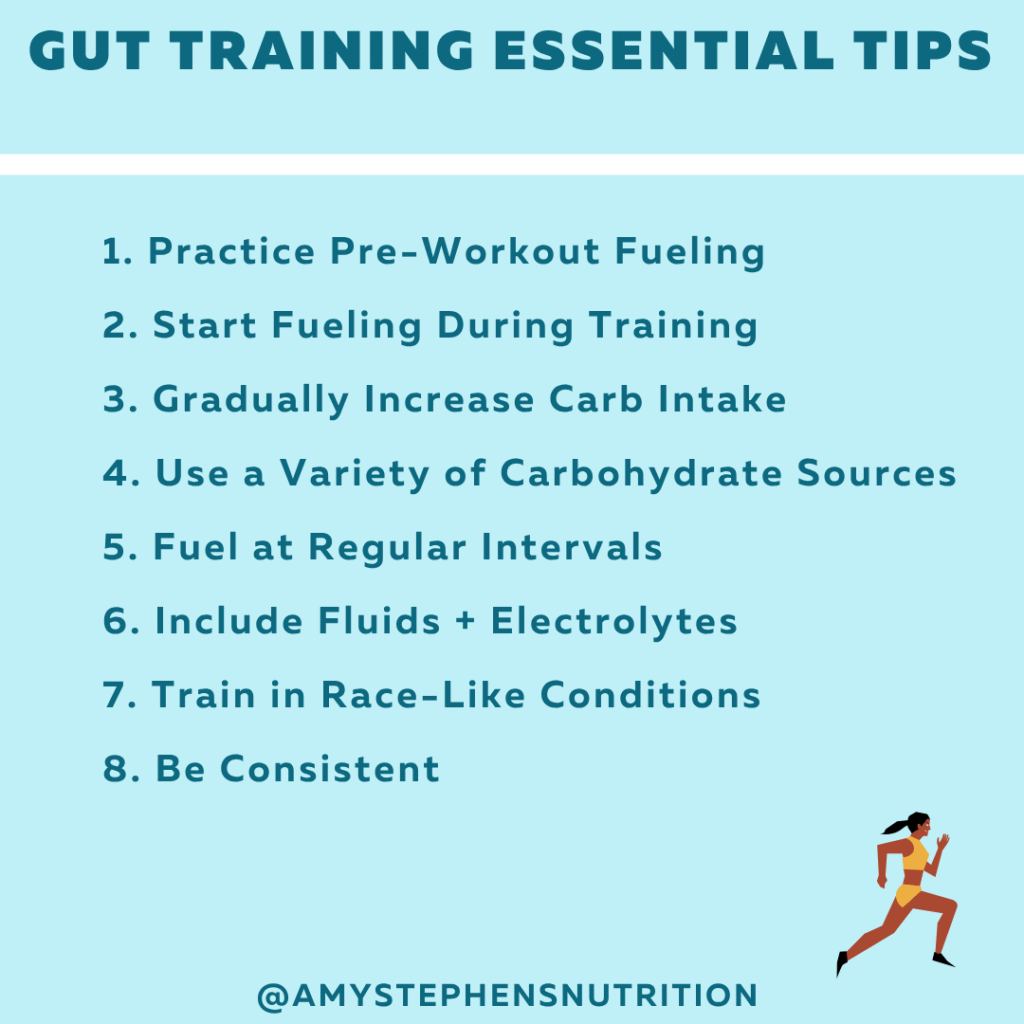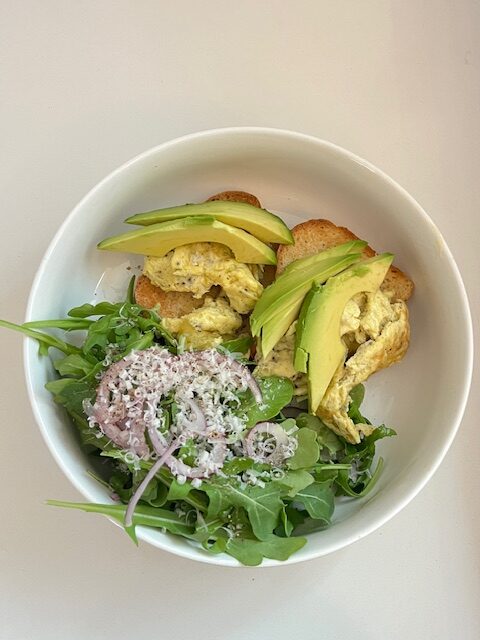Amy Stephens
MS, RDN, CSSD, CEDS
Licensed dietitian
specializing in sports nutrition
and eating disorders
MS, RDN, CSSD, CEDS
Licensed dietitian
specializing in sports nutrition
and eating disorders
Many endurance athletes avoid fueling during long runs or rides because it feels uncomfortable or causes gastrointestinal (GI) issues. But often, that discomfort isn’t due to fueling itself—it’s because the gut hasn’t been properly trained. Being able to ingest carbohydrates during an endurance event will improve performance. It will enable you to exercise at a higher intensity for longer without running out of energy.
This is where gut training can be a great thing to start experimenting with.
Gut training is the process of gradually teaching your digestive system to handle fuel—specifically carbohydrates—during exercise. Just like your muscles adapt to training, your gut can adapt, too. With consistent, intentional practice, your gut can start adapting in two weeks, becoming more effective at:

And the science backs this up:
With consistent gut training, you’ll be able to take in more fuel with less discomfort—helping you avoid energy crashes, improve performance, and feel stronger all the way to the finish.

Practice Pre-Workout Fueling
In addition to fueling during runs, I’ve also found that consistently eating before and after workouts has made a big difference in how I feel and perform. Taking in carbohydrates before a run gives me the energy I need to get through the run feeling strong, and fueling afterward helps me recover faster and stay consistent with my training. With consistent gut training—and by giving your body the fuel it needs before, during, and after your workouts—you’ll be able to train harder, recover faster, and perform at your best.
Here are some quick things that I like to eat before a run:

Start Fueling During Training and Gradually Increase Carb Intake
Fueling during workouts longer than 90 minutes plays a key role in effective gut training. These longer sessions are ideal for helping your digestive system adapt. Fuel at regular intervals with fluids and electrolytes.
Here are some great options that use a variety of carb sources:

Here’s what I typically eat directly after a run (second breakfast)
Refuel post-workout with a mix of carbohydrates and protein to support recovery and help your gut adapt to fueling.
Being consistent with carbohydrate gut training can enhance both performance and overall health during a training cycle. Longer workouts provide a valuable opportunity to experiment with different foods and sports products to find what works best for your body.

Reference
Cox GR, Clark SA, Cox AJ, Halson SL, Hargreaves M, Hawley JA, Jeacocke N, Snow RJ, Yeo WK, Burke LM. Daily training with high carbohydrate availability increases exogenous carbohydrate oxidation during endurance cycling. J Appl Physiol (1985). 2010 Jul;109(1):126-34. doi: 10.1152/japplphysiol.00950.2009. Epub 2010 May 13. PMID: 20466803.
Jeukendrup AE. Training the Gut for Athletes. Sports Med. 2017 Mar;47(Suppl 1):101-110. doi: 10.1007/s40279-017-0690-6. PMID: 28332114; PMCID: PMC5371619.
Jeukendrup A. A step towards personalized sports nutrition: carbohydrate intake during exercise. Sports Med. 2014 May;44 Suppl 1(Suppl 1):S25-33. doi: 10.1007/s40279-014-0148-z. PMID: 24791914; PMCID: PMC4008807.
Jeukendrup A. Training the Gut for Athletes. 2018. Gatorade Sport Science Institute, SSE#178. https://www.gssiweb.org/sports-science-exchange/article/training-the-gut-for-athletes